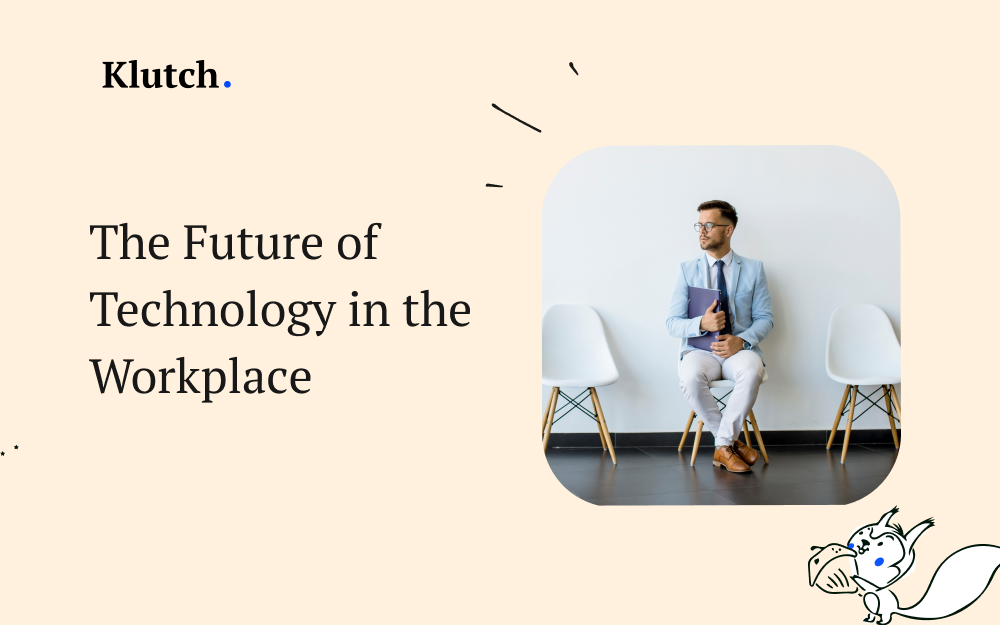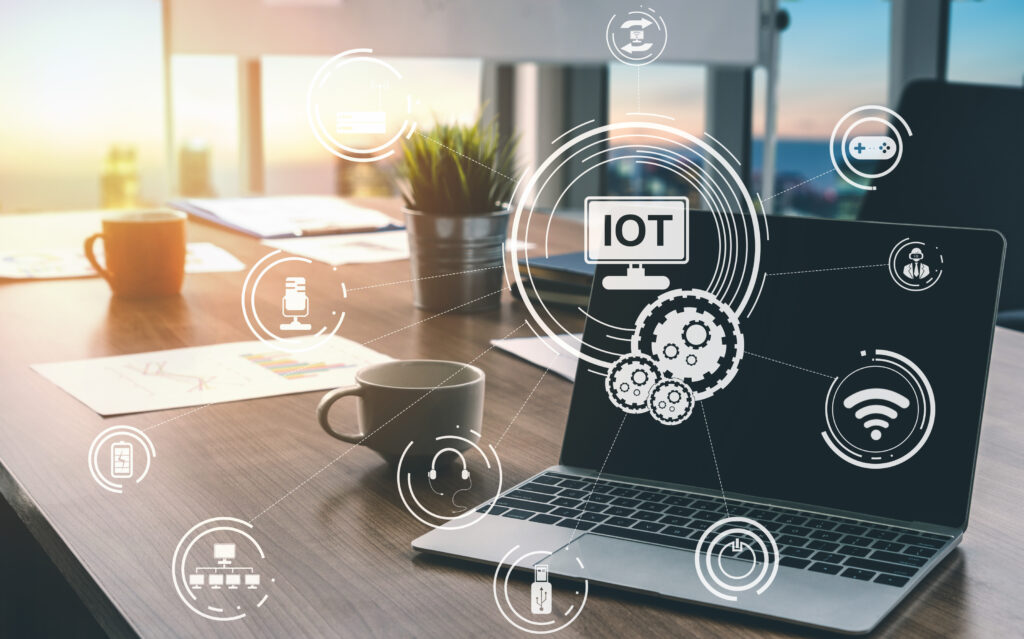About fifteen years ago, the idea of remote work and virtual meetings was simply an idea to many of the roughly 6.65 billion smartphone users across the world today. A lot has changed since that time.
Technology is changing the way we work and talk to each other at work because it is improving so quickly. With tools for working together and the Internet of Things, as well as automation and artificial intelligence, technology is changing how companies work. In this article, we will explore the future of technology in the workplace and its impact on jobs, collaboration, artificial intelligence, augmented reality, virtual reality, the Internet of Things, and cybersecurity. Let’s look into the exciting things that could happen.
Technology has become an integral part of the modern workplace, driving efficiency, productivity, and innovation. As technology continues to evolve at an unprecedented pace, it is crucial for organizations and employees to adapt and embrace these advancements to stay competitive in the digital age.

The Impact of Technology on Jobs
Currently, technology has shaped and redefined jobs and the workplace in general and over 50% of people agree that technology will determine workplace changes in the next five to 10 years. The growth of artificial intelligence, implementation of automation to work processes, and use of wearable technology are just a few of the instances that have contributed to the huge impact that technology has on the workplace. Let’s discuss a few more in detail.
Automation
Automation has long been a topic of discussion when it comes to the future of work. While there are concerns about job displacement, automation also presents new opportunities. Repetitive and mundane tasks can be automated, allowing employees to focus on higher-value work that requires critical thinking and creativity.
Statistics show that about 70% of people are optimistic about increasing automation in the workplace.
Automation does not necessarily mean the complete replacement of human workers. In many cases, it leads to a shift towards human-machine collaboration. As machines and AI systems take over repetitive and mundane tasks, humans can focus on tasks that require emotional intelligence, creativity, critical thinking, and interpersonal skills. This collaboration between humans and machines can lead to increased productivity and better outcomes.
Job Redesign
With the integration of technology in the workplace, traditional job roles are evolving. Employees are now required to develop new skill sets to complement automated processes. Job redesign is becoming more prevalent, with employees taking on tasks that require human touch, such as problem-solving, relationship-building, and strategic decision-making.
While some jobs may be displaced due to the growth of technology, it is important to note that new jobs are also created as a result. As technology advances, new industries and job sectors emerge. These new jobs often require specialized knowledge and skills related to the development, maintenance, and operation of automated systems.
Collaboration Tools
Collaboration is an essential aspect of any successful workplace. Effective communication and teamwork are necessary for organizations to reach their goals and encourage new ideas.
Technology has revolutionized how teams communicate and work together. These tools provide employees with seamless communication channels, regardless of their physical location.
With instant messaging platforms, team members can connect in real-time, share ideas, ask questions, and receive immediate feedback. This eliminates the delays associated with traditional communication methods like emails or phone calls, enabling faster decision-making and problem-solving.
Virtual Meetings
Virtual meetings have become the norm, especially in remote work environments. With video conferencing platforms and collaborative tools, teams can seamlessly connect and discuss ideas in real-time, fostering a sense of unity and collaboration despite physical distances.
In addition to video conferencing platforms and collaborative tools, the availability of advanced video presentation tools has further enhanced the virtual meeting experience. They enable presenters to deliver engaging presentations, incorporating multimedia elements such as slideshows, videos, and animations to captivate the audience and effectively convey their ideas.
Project Management
Technology has also transformed project management, making it easier to track progress, allocate resources, and manage timelines. Project management tools enable teams to collaborate effectively, enhancing productivity and ensuring project success.
Artificial Intelligence
Artificial Intelligence (AI) is revolutionizing various aspects of the workplace, enhancing decision-making and streamlining processes.
AI technologies enhance productivity and efficiency in the workplace. AI algorithms can process and analyze vast amounts of data at a speed and accuracy that surpass human capabilities. This ability enables businesses to gain valuable insights, make data-driven decisions, and optimize processes.
There are two key areas where AI is making significant strides.
Machine Learning
Machine learning algorithms analyze vast amounts of data to identify patterns and make predictions. This technology enables businesses to automate tasks, personalize user experiences, and optimize processes. Machine learning algorithms can assist in areas such as customer service, supply chain management, and data analysis.
Natural Language Processing
Natural Language Processing (NLP) allows computers to understand and interpret human language. NLP powers virtual assistants, chatbots, and voice recognition systems, enabling more efficient and natural interactions between humans and machines. This technology has applications in customer support, content creation, and data analysis.

Augmented Reality and Virtual Reality
Augmented Reality (AR) and Virtual Reality (VR) are transforming how we experience and interact with the digital world. In the workplace, AR and VR have promising applications.
Training and Simulation
AR and VR can provide immersive training experiences, enabling employees to learn new skills and practice complex tasks in a safe and controlled environment. From medical simulations to virtual onboarding programs, these technologies offer exciting possibilities for training and development.
For instance, in industries such as manufacturing, AR can provide workers with real-time information and guidance overlaying physical objects. This technology allows employees to learn new skills, practice complex tasks, and troubleshoot in a safe and controlled environment. For example, assembly line workers can use AR headsets to receive step-by-step instructions and visual cues, reducing errors and improving efficiency.
Remote Workforce
AR and VR can also facilitate remote collaboration and communication. In a VR environment, remote teams can gather virtually, interacting with each other as if they were physically present in the same room. This creates a sense of presence and improves communication and teamwork. VR meeting spaces allow participants to share and manipulate 3D models, diagrams, and presentations, enhancing the effectiveness of discussions and brainstorming sessions.
This technology has the potential to redefine remote work and create a more engaging and interactive virtual workspace.
Improving Customer Experiences
AR and VR also have the potential to improve customer experiences by providing interactive and immersive solutions. In retail, AR applications can enable customers to virtually try on clothing, visualize furniture in their homes, or preview how products will look before making a purchase. This enhances the shopping experience, reduces returns, and increases customer satisfaction.
Internet of Things
The Internet of Things (IoT) refers to the network of interconnected devices that collect and exchange data. IoT technology is reshaping how we work, enhancing productivity, efficiency, and overall employee experience. It’s estimated that the number of active IoT devices will surpass 25.4 billion in 2030 as more people around the world consider its use as much more than a theoretical phenomenon.
Smarter Workspaces
IoT-enabled devices can transform traditional offices into smart and connected spaces. From intelligent lighting and temperature control systems to occupancy sensors and smart security systems, IoT technology can improve energy efficiency, optimize resource utilization, and enhance employee comfort.
Improved Efficiency
By integrating IoT devices and systems, businesses can gather real-time data and insights. This data can be used to identify bottlenecks, optimize workflows, and improve overall operational efficiency. From predictive maintenance to inventory management, IoT has the potential to revolutionize how businesses operate.
Better Connectivity and Communication
One of the key benefits of IoT in the workplace is improved connectivity and communication. IoT devices, equipped with sensors and connectivity capabilities, can seamlessly share information and interact with each other. This enables employees to have real-time access to data and collaborate more effectively across different departments and locations.
Safer & Secure Workspaces
IoT technology plays a crucial role in enhancing workplace safety and security. IoT sensors and cameras can monitor various parameters, detect anomalies, and provide early warnings in hazardous situations. For instance, in a manufacturing facility, IoT-enabled sensors can detect changes in temperature, pressure, or chemical levels, alerting employees to potential dangers and enabling swift responses to prevent accidents.
Cybersecurity
Cybercriminals are becoming more sophisticated, employing advanced techniques to breach security systems and gain unauthorized access to sensitive data. As a result, organizations have had to adapt and implement more robust cybersecurity measures to safeguard their networks, systems, and data.
Data Protection
With the proliferation of digital data, organizations must implement robust cybersecurity measures to safeguard sensitive information. Encryption, access controls, and regular data security audits are essential to protect against data breaches and unauthorized access.
Privacy Concerns
As technology evolves, privacy concerns arise. 85% of global adults want to do more to protect their online privacy and organizations must strike a balance between leveraging technology for productivity and respecting individual privacy rights. Implementing transparent data handling practices and complying with privacy regulations are vital in building trust with employees and customers.
Conclusion
The future of technology in the workplace is filled with exciting possibilities. Automation, collaboration tools, artificial intelligence, augmented reality, virtual reality, the Internet of Things, and cybersecurity are transforming the way we work and interact. By embracing these advancements and adapting to change, businesses can stay competitive and thrive in the digital age.




